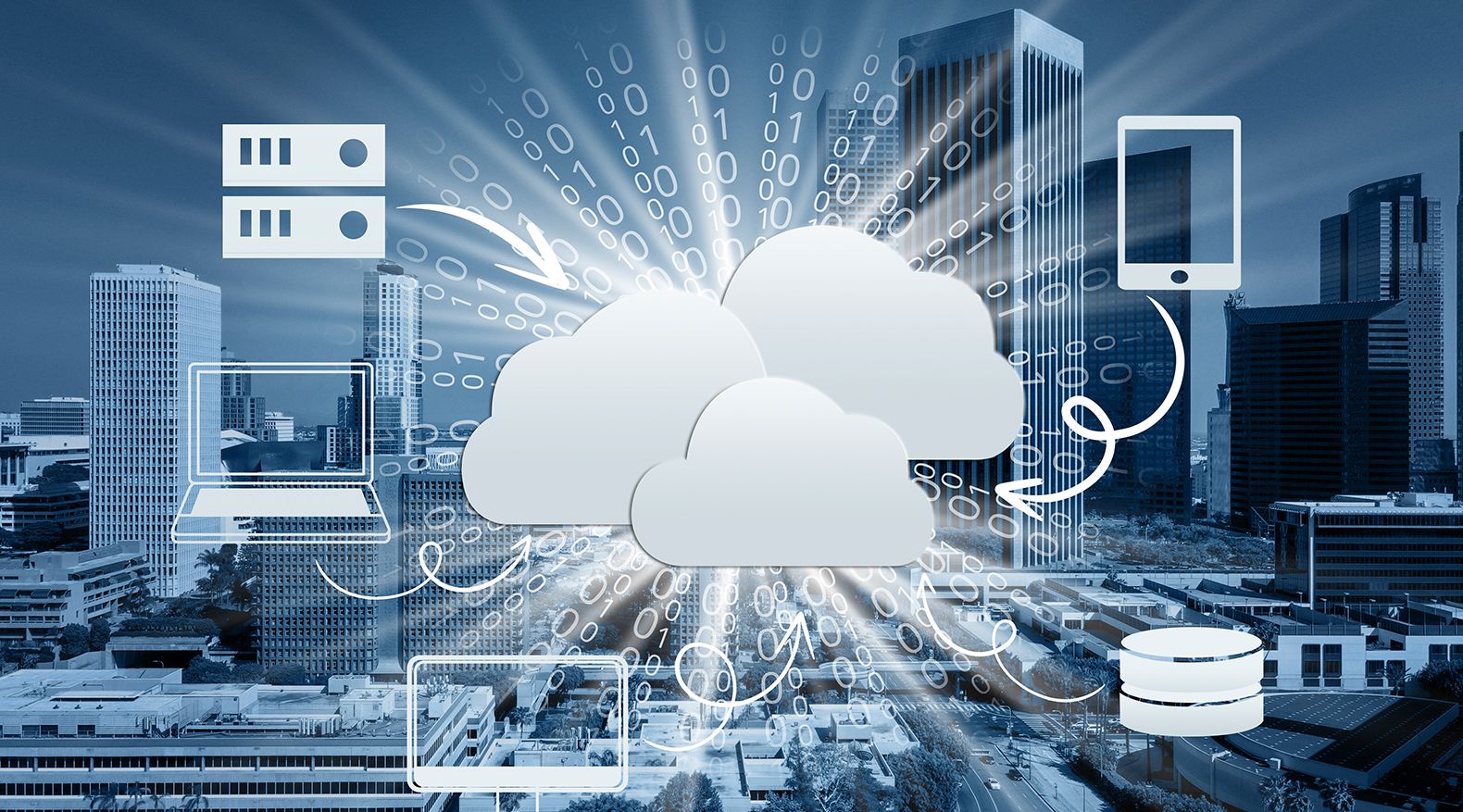Edge Computing vs. Cloud Computing

Today, the way businesses process data can significantly impact business performance, user experience, and operational efficiency. When it comes to modern data solutions, two major computing paradigms dominate the conversation: edge computing vs. cloud computing.
Though both serve the same fundamental purpose - data processing - they do so in distinctly different ways. Understanding these differences can help organizations, developers, and decision-makers choose the right architecture for their needs.
Let’s explore the battle of edge vs. cloud, how each one works, their pros and cons, and which approach might suit you best.
What is Cloud Computing?
The distribution of computer services, such as storage, servers, databases, networking, and software, via the Internet is known as cloud computing. Often located thousands of kilometers away from end consumers, these resources are housed in centralized data centers.
Whether you're using Google Drive to store documents or running complex machine learning models on Amazon Web Services (AWS), you're leveraging the power of the cloud.
How Does Cloud Computing Work?
Cloud computing relies on massive server farms owned by tech giants such as Amazon, Microsoft, and Google. These cloud servers store data and run applications, and users can access them remotely via the Internet.
Cloud computing's centralized design allows it to effortlessly scale resources up and down. This adaptability is one of the key benefits of cloud servers that entice enterprises worldwide.
What is Edge Computing?
Edge computing, in contrast, processes data at or near the source of generation, right at the “edge” of the network. Instead of transmitting all data to a remote cloud server, edge devices (like IoT sensors, smartphones, or micro data centers) handle data locally.
This decentralized computing model is gaining traction as devices become smarter and demand real-time responsiveness.
How Does Edge Computing Work?
In edge computing, small-scale data centers or embedded systems process data locally. For instance, in a smart factory, sensors can detect machine errors and respond instantly without waiting for commands from a distant cloud.
By keeping computation close to the data source, edge computing significantly reduces latency, making it ideal for time-sensitive applications like autonomous driving or real-time video analytics.
Key Differences between Edge and Cloud Computing
Although both edge and cloud computing serve the purpose of processing data, the way they do it—and the impact that has on performance, infrastructure, and user experience—varies significantly. Understanding these distinctions is essential when deciding which model aligns better with your needs.
Let’s explore the core differences in greater depth.
Latency and Speed: Real-Time Response vs Centralized Processing
One of the main factors affecting system performance is latency or the interval between an operation and the response to that action. The quicker the answer, the lower the latency.
Cloud Computing: In cloud models, data must travel from the device to a central data center—often located miles or even continents away. After processing, the data is sent back to the device. This round-trip, even over fast networks, introduces noticeable latency. For example, in applications like online gaming or remote surgery, even a one-second delay can be unacceptable.
Edge Computing: In contrast, edge computing keeps data processing close to the source—whether it's a sensor, smartphone, or local server. Because data doesn’t need to traverse long distances, latency in edge computing is minimal. Tasks can be executed in near real-time, making Edge ideal for critical use cases like autonomous vehicles, industrial automation, and augmented reality.
In short, Edge wins when responsiveness is key, while the cloud can suffice for tasks where slight delays are tolerable.
Bandwidth Usage: Efficient Data Handling vs. Centralized Uploads
Bandwidth refers to the volume of data that can be transmitted over a network. High data usage over time can congest networks and increase operational costs.
Cloud Computing: In traditional cloud architectures, all raw data is transmitted to remote servers for storage and analysis. This constant flow can consume significant bandwidth, particularly in data-intensive operations like video surveillance or real-time analytics. When millions of IoT devices are involved, the strain on bandwidth becomes even more evident.
Edge Computing: By processing data locally and transmitting only the necessary insights or summaries to the cloud, edge computing drastically reduces bandwidth usage. This localized approach also prevents network bottlenecks and minimizes the need for expensive data transfer plans.
So, when dealing with large volumes of real-time data, edge computing offers a far more bandwidth-efficient approach.
Reliability and Uptime: Internet Dependency vs. Offline Capabilities
System reliability often hinges on whether or not you require a connection to the central server for functionality.
Cloud Computing: Cloud services depend on a stable internet connection. If your network goes down, access to cloud-hosted applications or data is lost. In mission-critical environments like manufacturing or healthcare, this can lead to severe consequences. Additionally, cloud services may be vulnerable to outages on the provider's end.
Edge Computing: Edge computing excels in situations where constant connectivity is either unreliable or impractical. Since edge devices can process data locally, they continue to function even when offline. For example, in a rural wind farm or an offshore oil rig, edge systems can maintain operations independently and sync with the cloud once connectivity is restored.
Therefore, for environments where uptime is non-negotiable, edge computing offers superior resilience.
Security and Privacy: Centralized Fortresses vs Distributed Risk
Both cloud and edge computing introduce unique security and privacy implications, and the right choice often depends on the type of data and regulatory requirements involved.
Cloud Computing: Centralized cloud data centers are heavily fortified with multi-layered security, intrusion detection, and compliance frameworks. However, because data from various clients is stored in the same infrastructure, it becomes an attractive target for cyberattacks. Also, sensitive data often traverses public networks, increasing exposure.
Edge Computing: By keeping data processing near its source, edge devices minimize the need to send sensitive data. Industries like finance and healthcare that handle private or regulated data will find this model especially tempting. Nevertheless, with thousands of distributed endpoints, securing each one becomes complex. Without proper safeguards, edge devices can become vulnerable entry points for attackers.
So, while cloud server advantages include robust centralized security, edge computing introduces a decentralized computing model that enhances privacy—if properly managed.
Scalability and Resource Management: Elastic Growth vs Physical Expansion
Scalability, or the capacity to adjust computer resources in response to demand, is essential for growing companies.
Cloud Computing: One of the hallmark advantages of cloud servers is seamless scalability. Cloud platforms such as AWS, Microsoft Azure, or Google Cloud enable enterprises to increase resources with a few clicks. This elasticity is especially useful for startups and SaaS platforms that experience fluctuating demand.
Edge Computing: Scaling edge infrastructure requires the physical deployment of new hardware or nodes. For example, adding more processing capability to a smart city network might involve installing more edge devices or upgrading existing ones. This makes scaling slower and costlier, although new plug-and-play edge devices are helping to streamline this process.
In essence, if rapid growth and flexibility are top priorities, the cloud remains a dominant force. However, Edge is better suited for localized, performance-critical expansions.
Real-World Use Cases
To further understand the practicality of edge computing vs. cloud computing, let’s look at some real-world examples.
Cloud Computing Use Cases
Streaming Services: Platforms like Netflix rely on cloud computing to manage vast content libraries and deliver them to users across the globe.
Business Applications: From CRM tools to large-scale analytics, cloud computing powers enterprise software solutions.
Website Hosting: Websites of all sizes run on cloud servers due to their scalability and cost-effectiveness.
Edge Computing Use Cases
Autonomous Vehicles: Self-driving cars process real-time data from sensors and cameras to make split-second decisions.
Industrial IoT: Predictive maintenance is used by smart factories using edge computing to make sure their machinery operates effectively.
Healthcare Monitoring: Wearable devices monitor patient vitals and alert medical staff in emergencies—without waiting for cloud processing.
Benefits of Cloud Computing
The cloud has become synonymous with modern digital infrastructure. Here are some standout cloud server advantages:
Scalability: Add or remove resources in real-time.
Cost-Effectiveness: Pay-as-you-go pricing reduces upfront costs.
Accessibility: Access your data and services from anywhere with internet access.
Maintenance-Free: Providers handle updates and maintenance.
Data Backup and Recovery: Built-in redundancy ensures data safety.
Benefits of Edge Computing
Although newer, edge computing offers game-changing benefits for specific scenarios.
Ultra-low Latency: Essential for real-time responses.
Reduced Bandwidth Usage: Less need to send raw data to cloud servers.
Improved Security: You can keep sensitive data local.
Resilience: Continued functionality during connectivity loss.
Support for IoT Expansion: Designed for an interconnected device ecosystem.
Challenges and Considerations
Before choosing between edge vs cloud, it’s essential to consider their limitations.
Challenges of Cloud Computing
Latency Issues: Not ideal for real-time applications.
Data Privacy: Transmitting sensitive data across the Internet raises concerns.
Dependence on the Internet: No connectivity often means no access.
Challenges of Edge Computing
Complexity: Managing a decentralized system can be difficult.
Device Security: Node security is separate for each node.
Limited Computing Power: Edge devices and cloud servers may not handle resource-heavy tasks.
The Rise of Hybrid Models
Interestingly, many organizations are now adopting hybrid architectures—a blend of cloud and edge computing. This allows businesses to balance the advantages of both worlds.
For instance, a retail chain might use edge computing for in-store analytics while relying on the cloud for inventory management and long-term data storage.
This hybrid approach supports the growing need for decentralized computing while preserving the cloud’s scalability and power.
Final Comparison: Which One is Right for You?
Choosing between edge computing vs. cloud computing isn’t about declaring a single winner. Instead, it depends on your specific needs.
For applications demanding real-time response, like autonomous systems or industrial automation, edge computing is the way to go.
If your priority is scalability, storage, and cost-effectiveness, cloud computing provides a well-established, secure environment.
However, if your operations involve both real-time processing and long-term data analytics, a hybrid model may be the most practical solution. Ultimately, the best approach is not necessarily choosing edge or cloud—it’s knowing when and how to use each effectively.
Wrapping Up
The tech landscape continues to evolve rapidly. As more devices connect and generate more data, understanding the fundamental differences between edge vs. cloud becomes crucial.
While cloud computing remains a cornerstone of enterprise IT, edge computing is rising fast, especially in industries demanding speed, responsiveness, and local processing. This growth is largely influenced by emerging edge computing trends that prioritize real-time decision-making and decentralized processing. Each has its strengths and trade-offs, and often, the ideal architecture blends both.
As you plan your next infrastructure move, consider your application’s latency needs, data sensitivity, and scalability goals. This concluding comparison should help you find a solution that addresses both current and future needs.
